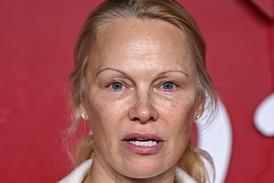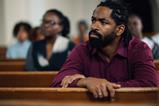Dr Belle Tindall on her experiences of interviewing those involved in setting homeless children in families
Almost two years ago, I had a meeting scheduled with a woman who worked for the fostering and adoption charity Home for Good.
I’d never met her before, but one quick LinkedIn stalk and I decided that she was the kind of guest I ought to get the good coffee in for. She looked seriously impressive, effortlessly cool and properly personable – which is no mean feat on a LinkedIn profile. Mine makes me look like a technophobic Bible nerd (which isn’t inaccurate, I suppose).
An out-of-the-ordinary meeting
This meeting was the first step in writing a profile piece about the charity, so was pure research. I do this kind of thing a lot; it’s a big part of the day job. I meet incredible people who are doing truly remarkable things – launching creative and ethical businesses, throwing baby showers for refugees, proper ‘kingdom come’ type stuff – and then I write about them.
So, while I was looking forward to this meeting (she really did look so cool), its presence in my diary was nothing out of the ordinary. A pleasant, albeit pretty regular, Tuesday morning – or so I thought.
She arrived at my office on a moped (come on, how chic is that?), asked if I had hot chocolate as a drink option (I didn’t, but you better believe that I have ever since) and began to tell me about her work.
I’m an old-fashioned kind of writer, so I promptly got my notepad and pen out, poised to kick this writing process off. But, weird thing, when I look back to that page, there’s not one single thing written on it.
This was supposed to be a professional meeting but my professionalism seemed to completely check itself out.
As well as working for Home for Good, this wonderful woman was going through her own journey of adopting children. And so, when she spoke, she did so with her whole heart. She quite literally knew her stuff from the inside out. She told me other people’s stories, and she told me her own. She talked me through the overwhelming statistics (100 children enter the care system every single day in the UK) and the processes in place to keep each child safe. She told me about the highs and the lows, the beauty and the agony, the triumphs and the challenges.
Visibly moved
As I was listening to her, my eyes started filling up with mystifying tears. Utterly panicked at the thought of appearing unhinged, I gave myself a firm internal talking to: “Don’t you dare Belle, don’t you dare shed a tear. You’re at work. Get a grip.”
Fighting for the rights of women and orphans was something that the early Church became infamous for
Alas, it was no good. Despite my best efforts, a big fat tear disobediently rolled down my cheek. And then another. And maybe one or two more.
Mortifying.
I was crying at a work meeting and I couldn’t even explain why. It’s like my heart had got snagged on her words, catching me totally off guard.
“Don’t worry”, she very kindly said to me, “this happens a lot – we think that it’s because the cause is so close to God’s heart – people who know him tend to cry.”
That was it.
Immediately, I knew that that’s what was happening to me. Because, although there was undeniable anguish within them, the tears didn’t feel full of pity. They weren’t hopeless or wholly sad. It’s hard to explain, even now, but it’s like even talking to people who actively partner with God in “set[ting] the lonely in families” (Psalm 68:6) becomes a kind of thin place: as in, a place where you can feel heaven leaning in close. I don’t know if that’s theologically correct or not, but I’ve had a number of meetings with other people from Home For Good since – and I’ve never left one dry-eyed. So, you tell me.
Reflecting God’s heart
As my LinkedIn profile can attest, I’m nerdy. So, I’ve pondered this a lot. And I’ve realised that, biblically speaking, the anger that tends to rise in my stomach at the thought of women being mistreated, and the tears that flow at the thought of the 104,808 children currently in the care system are two sides of the same coin.
They’re both a symptom of knowing, loving and living in accordance with the God who keeps a special eye on the “orphans and widows” (James 1:27). I think it’s a part of the deal. After all, fighting for the rights of women and orphans was something that the early Church became infamous for. It was written into the blueprint of their ethics, woven into the fabric of their communities.
Neither feminism, nor the notion of official adoption, would exist without Christianity. They’re thin places, indeed.
And that’s where I’d better end this – because those pesky tears are back again and my laptop is going blurry.
Dr Belle Tindall is Seen and Unseen’s resident writer (see seenandunseen.com) and co-host of its ‘Re-Enchanting’ podcast. With a doctorate in biblical studies, she has a few specialisms; one of which is feminist theology.

































No comments yet